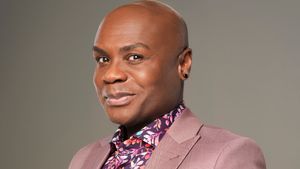Donald Trump has, by almost any measure, been the worst president in U.S. history, or at least within the memory of people living in 2020. But for some reason, he has remained popular with a sizable segment of Americans. While Joe Biden defeated him in the presidential election, 74 million Americans voted for Trump, and a large percentage of Republicans, like Trump himself, are denying that he actually lost the election. So why do Trump's diehard fans stay that way?
Yes, he's made some people happy with his tax cuts and appointments of right-wing judges, and he is beloved by white supremacists and conspiracy theorists, but he has downplayed a pandemic that has taken the lives of more than 276,000 Americans and caused an economic crash. One would think his personal style, bullying, and insults would alienate many people. Yet his approval ratings have remained stable at around 40 percent for most of his presidency, and the 40 percent can't all be fringe elements. What could possibly account for the continued unwavering support of Trump loyalists?
"I think that there are a number of things at play, crosscurrents, if you will," said JoDee Winterhof, senior vice president for policy and political affairs at the Human Rights Campaign.
"There are some people who feel they've been left out and left behind," she said. Even though Trump almost assuredly never cared about, for instance, displaced factory workers, some turned to him in 2016 and again in 2020 because they thought he did. And as the nation becomes more diverse, those previously in the majority -- straight white cisgender people, mostly -- have wondered where they fit in, and they felt Trump was on their side.
There was appeal in Trump's image as a successful businessman as well, Winterhof notes. "Both parties have spent billions of dollars saying things are wrong with Washington and we need to shake it up," she said. Some voters considered Trump the right person to do the shaking, and they still do.
Support for Trump varies by where people get their news, she added. Some people get it entirely from social media, where some of the "news" is not true, she said. Plus, "there's still a base of very conservative voters for whom the judges he's appointed and some of the policies he's done are just what they want," she says.
To some other political observers, the answer is partisanship -- Trump equals the Republican Party, and the Republican Party equals Trump. "Once Trump captured the nomination in 2016, he then went on to take over the party completely," said John Halpin, senior fellow and co-director for politics and elections at the Center for American Progress. "Despite his deviations from Republican orthodoxy on spending and trade and his stylistic differences with candidates of the recent past like [John] McCain or [Mitt] Romney, the party just went along with it and defended him and his agenda because the alternative was Democratic rule."
"Opponents of Trump find it hard to imagine, but to most Republicans, he's just the party leader," Halpin added. "And he shares their priorities on most policies even if some of them don't like his style. And the alternative is what they describe as 'radical socialism' and 'extreme identity politics,' which they despise more than anything. Trump runs as their sword against these trends."
Data from the Pew Research Center bears this out. "Trump's relatively steady ratings are unique among recent presidents," says a Pew analysis released in August. "His ratings are also the most polarized along party lines in the modern era" in "a continuation of a trend seen in assessments of recent presidents."
But partisanship and a loyal base did not equal landing a second term. "Trump's approach is good enough to keep much of his base but not good enough to expand his position and build majoritarian support," Halpin said before the election. "Trump is hemorrhaging college-educated white voters, particularly women. At the same time, Trump is doing much worse with his base of noncollege white voters than he was at this point in 2016."
Democratic presidential nominee Joe Biden, Halpin added, "isn't winning these voters outright but has cut the margins and improved significantly from Hillary Clinton's position in 2016. ... While Trump attempts to drive up the enthusiasm of his voters, Biden is also doing the same while simultaneously cutting into Trump's past voters and doing much better with groups like seniors who vote in high numbers." And that did end up in a winning coalition for Biden.
Winterhof likewise said she observed a decline in enthusiasm among voters who were counting on Trump for positive change and agreed that Biden was better positioned than Clinton among voters overall.
A State of LGBTQ Voters poll, conducted in September by Pathfinder Opinion Research for GLAAD, found that 76 percent of LGBTQ+ voters supported Biden, as opposed to 17 percent for Trump. The poll showed positive opinions of Biden and his running mate, U.S. Sen. Kamala Harris of California, and overwhelmingly negative opinions of Trump and his vice president, Mike Pence. That's not surprising given Biden and Harris's support for the community and Trump and Pence's many destructive actions, but it does counter an unscientific survey taken on a dating app that showed more than 40 percent of gay men favoring Trump.
"In contradiction to unscientific polling released by another entity, this survey shows Biden holding a substantial lead among LGBTQ+ voters of all sexual orientations and gender identities, including those who identify as gay men," says a Pathfinder memo that accompanied the poll results.
Polling before the 2016 election showed similar results for Clinton versus Trump. For instance, an NBC News poll found 72 percent of LGBTQ+ voters favoring Clinton, 20 percent Trump. As Winterhof pointed out, although Trump's base finds a variety of reasons to support him, some segments of the population have never bought in. "The LGBTQ community has had Trump's number," she said.


















































































